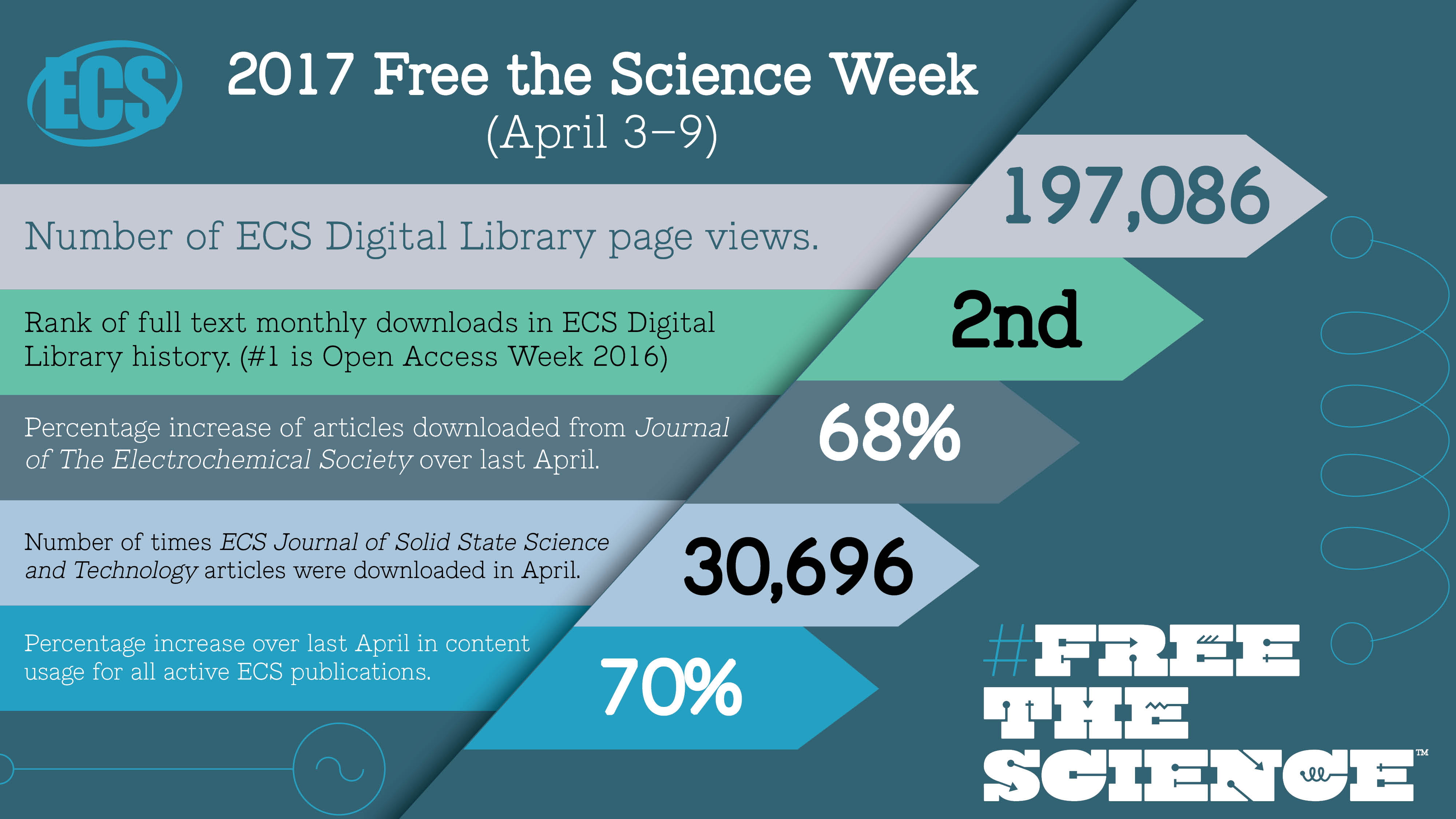In May 2017, we sat down with ECS journal editors Robert Savinell and Dennis Hess at the 231st ECS Meeting to discuss the future of scholarly publishing, open access, and the Society’s Free the Science initiative. The conversation was led by Rob Gerth, director of marketing and communications at ECS.
In 1978, Savinell became an active member of ECS, serving as an associate editor for the Journal of The Electrochemical Society (JES) in 1984. He was appointed editor of JES in 2013, where he began focusing on continuing the tradition of rigorous review, enhancing timeliness of decision and publication, while transitioning JES to full open access. Savinell has recently been reappointed as editor JES for a three-year period, from May 18, 2017 through May 17, 2020.
Hess became a member of ECS in 1974. He has been active in both the ECS Dielectric Science and Technology and Division and ECS Electronics Division, serving as a divisional editor from 1978 through 1990. Currently, Hess is the editor of the ECS Journal of Solid State Science and Technology.
Listen to the podcast and download this episode and others for free through the iTunes Store, SoundCloud, or our RSS Feed. You can also find us on Stitcher.


 Recently there has been a spate of comment expressing frustration about the allegedly slow progress of open access, and especially Green open access. It is hard to disagree with some of this sentiment, but it is important that frustration not lead us into trying to solve a problem with a worse solution. The key, I believe, to making real advances in open access is to walk away from the commercial publishers who have dominated the market for scholarship. Only if we do that can libraries free up money from our collection budgets to do truly new things. A new business model with the same old players, even if it were possible, would be a mistake.
Recently there has been a spate of comment expressing frustration about the allegedly slow progress of open access, and especially Green open access. It is hard to disagree with some of this sentiment, but it is important that frustration not lead us into trying to solve a problem with a worse solution. The key, I believe, to making real advances in open access is to walk away from the commercial publishers who have dominated the market for scholarship. Only if we do that can libraries free up money from our collection budgets to do truly new things. A new business model with the same old players, even if it were possible, would be a mistake. Researchers from Purdue University are making headway on solving issues in electrolyzers and fuel cell development by gaining new insight into electrocatalysts.
Researchers from Purdue University are making headway on solving issues in electrolyzers and fuel cell development by gaining new insight into electrocatalysts. Assuming that the deployment of carbon removal technology will outpace emissions and conquer global climate change is a poor substitute for taking action now, say researchers.
Assuming that the deployment of carbon removal technology will outpace emissions and conquer global climate change is a poor substitute for taking action now, say researchers.


 In its first “
In its first “